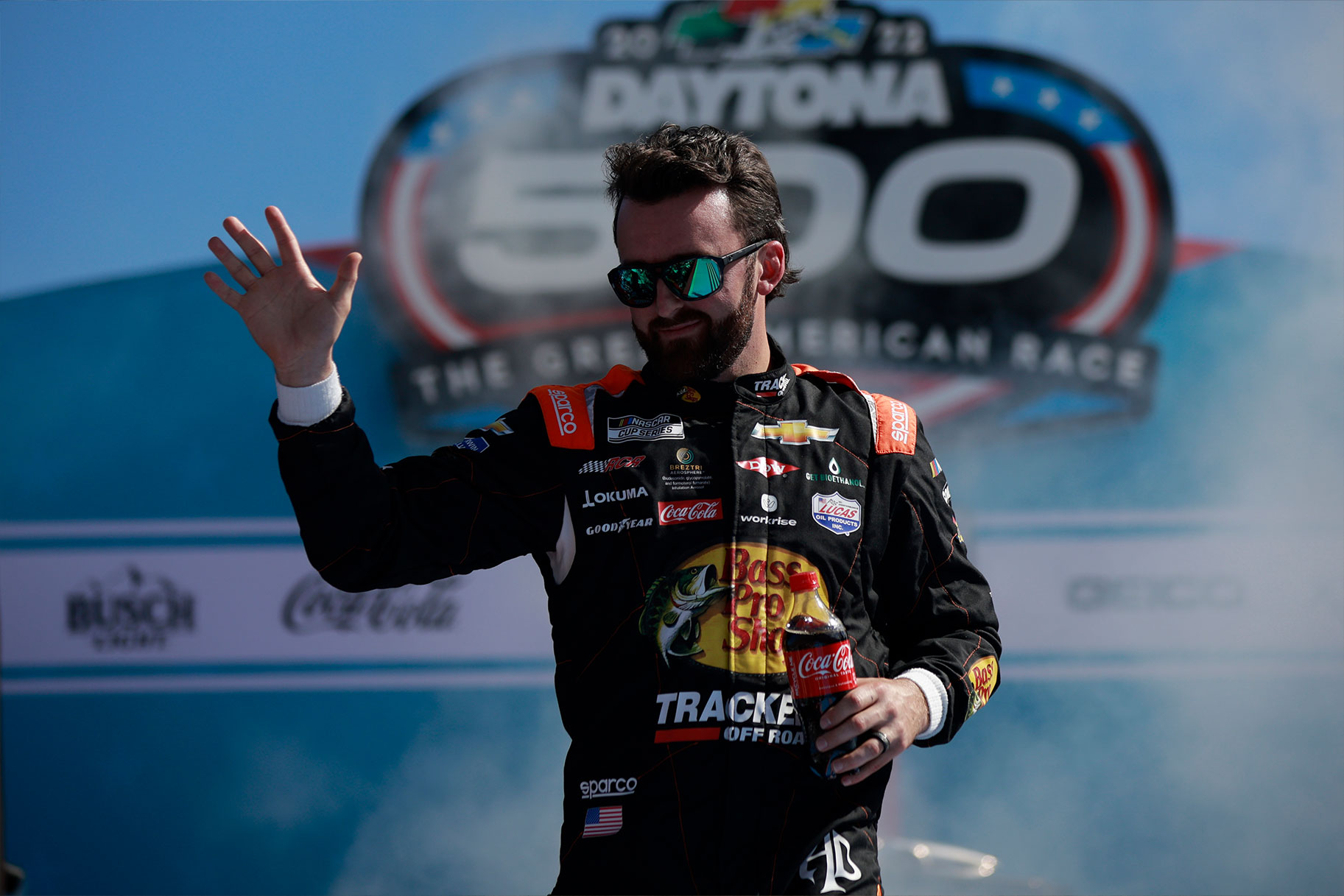'The Great American Race': The History Of NASCAR's Daytona 500, Explained
This week's episode of "Austin Dillon's Life in the Fast Lane" focused on Austin's time at 2022's Daytona 500.

“Drivers, start your engines!”
To the uninitiated, this simple phrase can easily go unnoticed, but to ardent NASCAR fans around the world, this is the thunderous rallying cry for every race, including the fabled behemoth we’ve come to love: the Daytona 500. Fans of USA Network's new lifestyle and NASCAR reality series, "Austin Dillon's Life in the Fast Lane," got an intimate look into the Daytona 500 in this week's episode — but where does the epic test of endurance come from?
Known as the “Superbowl of Stock Car Racing” and “The Great American Race,” the Daytona 500 owns the enviable title of the most prestigious race on the NASCAR schedule ever since its inception in 1959 at the Daytona International Speedway in Daytona, Florida. Serving annually as the inaugural race for the NASCAR Cup Series, the Daytona 500 is truly an anomaly in sports wherein championships occur at the end of a season instead of the beginning. Who says you can’t have your cake and eat it too?
The event’s qualifying criteria are equally unique, requiring some teams to race their way into the field. To determine the first row, drivers compete in a timed round of racing that occurs one week before the race. After that, two additional qualifying races of 150 miles with, if necessary, two-lap overtime determine the remainder of the field’s drivers.
Totaling a daunting 500 miles, the epic race commands drivers to complete 200 laps around Daytona International Speedway’s 2.5-mile-long track. The contest is broken up into three stages with the first two stages comprised of 65 laps and the final stage equating to 70 laps. Accounting for cautions, inclement weather conditions, and pitstops, the grueling race typically lasts around four hours, putting both drivers’ physical and mental fortitude to the ultimate test of stamina. (The 2012 Daytona 500 holds the distinct honor of being named “NASCAR’s Longest Day” because the race lasted an unfathomable 36 hours due to severe weather conditions and multiple cautions.)
When it comes to the points at stake, there’s a lot on the line. Points are dished out to the drivers who finish in the top ten of each of the first two stages. In addition to one, coveted playoff point, the driver who wins the first two stages garners 10 points while the second-place driver earns nine points, the third-place driver notches eight points, and so on down the line. After the culmination of the final stage, the overall race winner then amasses five playoff points as well as a whopping 40 race points. The second-place finisher tallies 35 points; the third-place driver gets 34 points; the driver in fourth place earns 33 points; et cetera. To up the competitive ante, the awarded points change dramatically from the 36th place to the 40th where each spot only earns one point. If foul weather threatens to disrupt the finish of the Daytona 500, the race is certified official after the completion of the second stage, regardless of its duration.
Though the awarded championship points are equivalent to that of any other NASCAR Cup Series race, this extraordinary event yields not only the biggest payout for the grand prize purse winner, but it also provides the greatest visibility for race teams and drivers across the media landscape. Since 1995, the competition’s television ratings have consistently surpassed even the mighty Indianapolis 500, which traditionally enjoys both a larger in-track attendance and broader international viewing (the Indianapolis 500 surpassed the Daytona 500 in TV ratings and viewership in 2021).
Normally held in mid-to-late February, since 1997, the winner of the Daytona 500 garners the revered Harley J. Earl trophy, and the driver’s car gets displayed at the esteemed Daytona 500 Experience, an affiliated museum in which attendees may view the prized vehicle in race-winning condition for an entire year.
Keeping in line with the race’s special qualities, in this year’s thrilling, full-throttle overtime finish, 23-year-old rookie driver Austin Cindric earned his first Cup Series victory by defeating veteran driver Bubba Wallace by a narrow margin of .036 seconds. Further fueling the mystique of his historic victory on the 64th anniversary of the race, Cindric clinched the win in front of a sold-out crowd on the 85th birthday of his car’s owner, the venerable Roger Penske. If NASCAR fans ever wished for a Hollywood ending, this was it.



